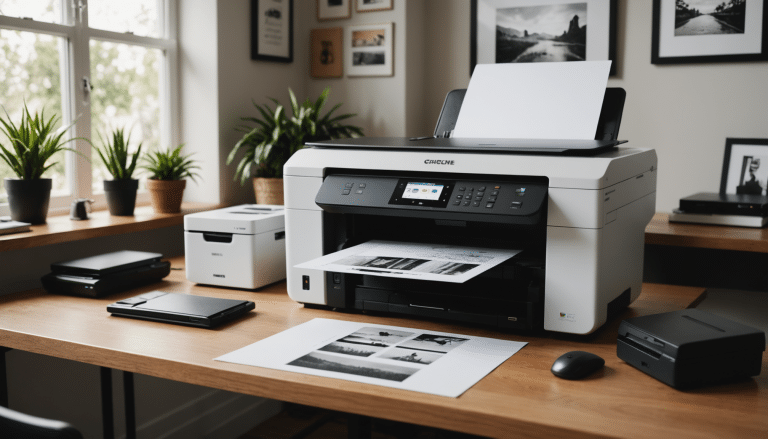
Office Showdown: Lever Arch File vs. Ring Binder – Pros and Cons
DISCOVER the ULTIMATE organizational tool! Compare RING BINDERS and LEVER ARCH FILES to find out which is perfect for your office needs. Explore SIZE, COLOUR, and more.
Stationery folders like lever arch files and ring binders are essential for efficient document organisation. This article explores their significance in managing paperwork, focusing on the popular office ring binder and lever arch file styles to aid in selecting the best option for organising and storing documents effectively.
Which is better: lever arch files or ring binders?
Lever arch files offer more capacity and sturdiness, suitable for extensive documents and frequent use. Ring binders are lighter, more versatile for daily tasks but hold fewer pages. Choose lever arch for heavy duty, large files, and ring binders for flexibility and lighter organization.
Key Differences and Practical Uses
- Lever arch files boast a robust metal clamp, perfect for heavy-duty document organisation.
- Choose ring binders for their flexibility and ease of paper navigation.
- Lever arch files are ideal for large volume storage and efficient labeling.
- Opt for a ring binder if you need portable document management.
- Consider material choices like polypropylene for eco-friendly options in both types.
- The design aspect can reflect your personal or office style preferences, from bold motifs to pastel charms.
- Lever arch files offer a more secure hold, while ring binders provide quicker access to documents.

Understanding Lever Arch Files and Ring Binders
Both lever arch files and ring binders are popular choices for keeping paper in check. The lever arch file stands out with its robust metal clamp mechanism capable of handling 500 sheets comfortably and a spine that offers ample room for labeling. You might have seen them stack up quite nicely and convey that sense of organised authority. In contrast, the standard ring binder, often with a simple ring mechanism, makes for a more flexible option—the lesser sibling, some might jest. The typical dimensions for both revolve around A4 standards, with spines running between 70mm and 80mm. It’s a matter of considering if the beefier arch file wins your heart or if the slender charm of a ring binder reigns supreme.
Ring binders are easy to spot, with their two or sometimes up to four rings, largely about ease and versatility. They make switching paper positions a breeze akin to swiping left or right but in the office setting. Meanwhile, the lever arch file boasts a more steadfast approach. It’s the heavy-duty choice when your documents refuse to compromise on staying put—like a loyal St. Bernard. The lever mechanism, that metal guardian, ensures your papers don’t accidentally take a walk.
Choosing between these two can be akin to deciding whether you prefer a precision instrument or a bouncer guard for your paper’s safety. Both have merits that play out in everyday A4 scenarios. For those archiving enthusiasts with heavy directory needs, the lever arch file might steal more glances. Whichever you pick, these staples of stationery improve life where papers and documents rule the roost.
Material and Design Considerations
Material choices in stationery are as vital as picking the right color for your living space—and they offer less room for instant repaints! Lever arch files and ring binders vie for attention with an array of materials. Polypropylene is a fan favorite in the plastic corner, light and recyclable, smoothing out not just papers but also your eco-conscious thoughts. On the cardboard scene, PVC and kraft materials wage a magnificent standoff. PVC brings durability, while kraft whispers sophistication and sustainability, Forest Stewardship Council approval and all.
When it comes to design, color becomes the muse. Whether you lean towards a pastel charm or a bolder motif, your folder can express your inner flair—office fashion for the meticulous. A bright orange can wave for attention while that subtle blue hints at calm efficiency. Enter the world of lever arch files or ring binders, where each choice adds a stroke to your personal stationery canvas.
And yet, it’s not just visual elegance we consider. The tactile element, that satisfying click of a ring binder or the resolute snap of a lever arch file—these small pleasures keep us loyal to our chosen format. Keep in mind that these files are more than mere paper holders; they’re tools designed to ease the chaos of information overload, ensuring documents reach you intact and unscathed. Choose wisely, for a binder’s duty is a solemn one.
Functionality and Usage
In the realm of functionality, both lever arch files and ring binders excel, each in their own laid-back, office-lounge fashion. Lever arch files, with their sturdy metal finger pulls, scream, or rather politely suggest, efficient handling and smoother retrieval. They seem to lean more towards life in an intelligent clutter. It’s the file of choice for those who can’t resist a good decluttering action shot for their Instagram.
The ring binder, however, is the nimble goat in this paper-holding pastoral. Light, easy to carry, and deft in its simplicity, it’s your go-to for portable document management. It’s easier to wrangle when packed by the dozen—packs of 10 or unique sets of 3. Who knew creating order from chaos could feel this feature-packed?
Metal meets its match with plastic options, as the polypropylene variants spring into action, appealing to the budget-conscious who still care about their papers’ well-being. These folders remind us that versatility is not a single destination, but a well-worn path. Balancing strengths with the clever use of punched pockets, navigating between the choices is akin to breezing through the office directory. Holding A4 papers securely, these folders have us considering whether they indeed hold the insights we seek or simply mock our organising attempts in silence.
Advantages and Disadvantages
The great file duel brings us to the advantages battle. The lever arch file flaunts its strength in holding heavy-duty A4 paperwork. That 70mm or 80mm spine doesn’t bow easily. Crafted often from premium materials like sturdy cardboard, it’s the heavyweight champion. Perfect for when your paper needs some serious taming, almost shouting obstacles into submission like the Hulk in a suit and tie—if he wore one.
Ring binders, on the other hand, play the adaptability card well. Their lighter, more frequent flipping mirrors our need for dynamic document juggling. They thrive on versatility and speed, but beware of the fickle nature of their rings – they might just toy with your paper’s sense of security on a wild commute. But much like that colorful tab divider, they love organising your life in rainbow order.
However, not all is pure skittles and sunshine. The lever arch file’s steadfast nature can manifest as weighty resistance. It does bulk up your office carry-on. Meanwhile, ring binders, glorious in their simplicity, might demand more environmental scrutiny—less formidably recyclable than their eco-warrior counterparts. Let your invested needs dictate which quirks and qualms you’re prepared to stare down, paper in hand.
Innovative Features Often Overlooked
Just when you thought stationery had played all its cards, enter the realm of overlooked innovations in lever arch file design and protective elements. Gone are the days when plain and drab sufficed. Now emboss print designs and covers like the ‘herlitz max.file protect’ stand as silent papier-mâché sentinels, guarding documents with extra flair. These help keep your archives not just secure but stylish too—might one say, ‘having their files and eating them too’?
Incorporating such features ensures enhanced document aesthetics while still providing the practicality to save you from bending under the weight of endless paper. The innovations continue, with color-coded systems making appearances, ensuring even the most chaotic of offices can transform into a zen sanctuary of sorted information. Papers under protective custody—who knew?
Yet such clever quirks typically command a stealthy presence. Their roles in fortifying your stationery arsenal mean they easily sidestep mainstream focus. So next time you pin posters or parade through an aisle of office supplies, keep an eye out for those seemingly mundane folders—they might just be the unsung harbinger of your workspace’s revolution. Discover these ring binder gems and let your stationary selection stride confidently as an unexpected ace in the hole.
| Criteria | Lever Arch File | Ring Binder |
|---|---|---|
| Capacity | Holds up to 500 sheets | Varies based on ring size |
| Mechanism | Sturdy metal clamp | Two to four-ring mechanism |
| Material Options | Cardboard, PVC, Kraft | Polypropylene |
| Design Flexibility | Solid colors and emboss prints | Wide range of colors and textures |
| Portability | Less portable due to size and weight | Highly portable |
| Environmental Impact | Recyclable materials | Plastic – requires eco-friendly options |
| Usage Scenario | Heavy-duty and stable storage | Flexible for frequent use |
Conclusion
Choosing between a lever arch file or a ring binder can significantly impact your workspace organisation. At Viking, we understand the importance of efficient solutions that complement your work environment. Our expertise is dedicated to helping you make informed decisions for optimal productivity.
Both options offer distinct advantages, from capacity to quick accessibility, fitting various needs. With Viking’s commitment to innovative workplace solutions, you can confidently enhance your workspace. Prioritise your organisational needs and let Viking guide you toward a more efficient and environmentally conscious workspace.
Frequently Asked Questions
What are the key differences between lever arch files and ring binders?
Lever arch files and ring binders are both used for organising documents, but they differ in design and capacity. Lever arch files typically feature a larger mechanism, allowing them to hold more paper—up to several hundred sheets of A4 paper. In contrast, ring binders usually have smaller capacities and come in various ring sizes. The choice depends on your document volume and storage preference.
Which is better for frequent use: lever arch file or ring binder?
For frequent use, lever arch files are considered more durable due to their robust mechanism, making them ideal for heavy volumes of A4 paper in office settings. They are efficient for organising large amounts of information. Ring binders are excellent for lighter loads and when ease of transport is necessary, as they come in lighter materials like polypropylene.
How do lever arch files and ring binders contribute to organisation?
Lever arch files and ring binders both enhance document organisation by providing easy access to papers. Lever arch files excel with their larger storage capacity, while ring binders offer versatility with various ring sizes and colours. These tools help streamline paperwork in any setting, from personal home use to professional office environments, ensuring documents are easily accessible and well-organised.
Can both lever arch files and ring binders be recycled?
Yes, both lever arch files and ring binders can be recycled, especially those made from materials like polypropylene and cardboard, provided they are free of metal components, which need separation. Many are now certified by the Forest Stewardship Council, indicating a commitment to sustainability. Ensuring proper disposal of arch files and binders contributes to environmental conservation efforts.












